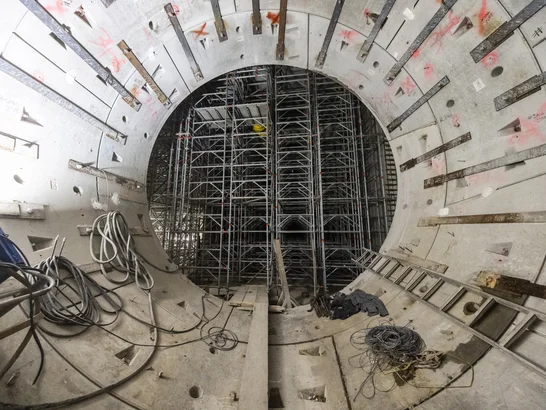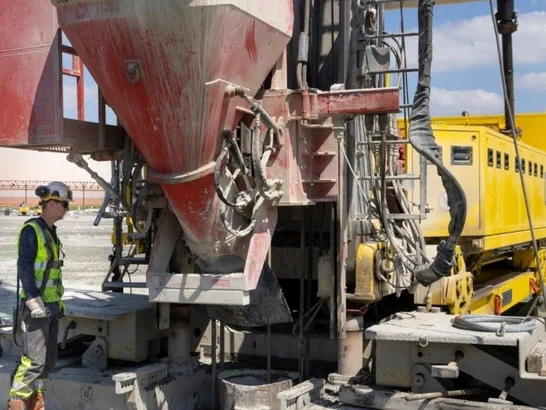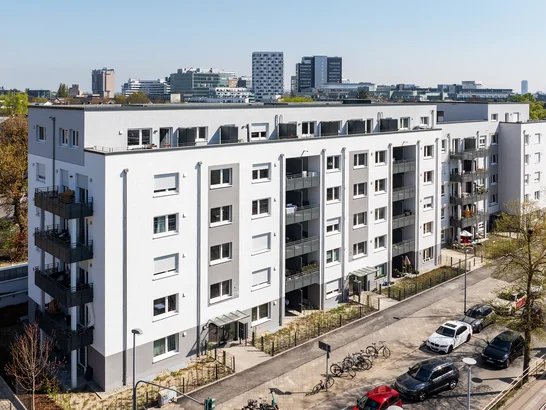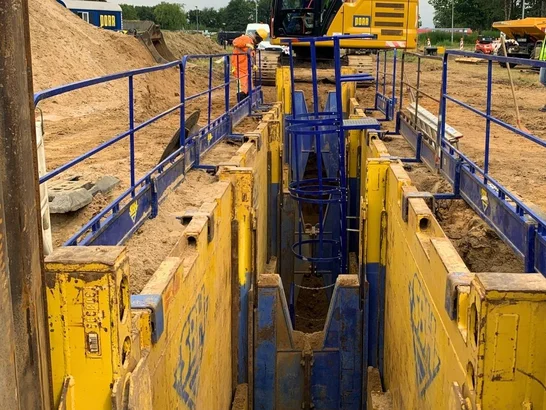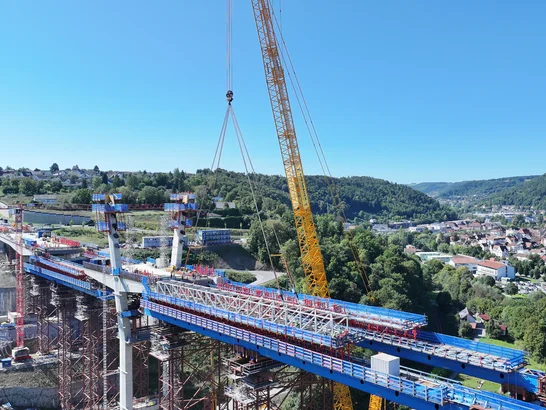Low-temperature asphalt: innovation and sustainability for the road construction of the future
Münster, / Transport route engineering / Specialized Articles
Münster, 27 October 2025 – With its General Circular on Road Construction No. 13/2025, the Federal Ministry of Transport is providing important impetus for the modernisation of German road construction. The focus is on the increased use of temperature-reduced asphalt (TA asphalt), which not only improves occupational safety but also offers ecological and economic advantages. The new regulation marks the transition from the test phase to widespread application, thereby initiating a fundamental change in road construction.

Asphalt works with TA in Münster (Westphalia).
Until now, processing conventional rolled asphalt required temperatures of up to 195°C. However, new occupational exposure limits will come into force on 1 January 2027, making it imperative to reduce emissions. TA-Asphalt uses special technologies to significantly lower processing temperatures – without compromising on quality or durability.
Technological diversity for greater safety
Various methods are used to reduce the temperature during installation. These include foam bitumen technology, viscosity-modifying bitumen – both organic and mineral – and surface-active additives. These methods enable processing temperatures to be reduced by up to 40°C, which not only reduces emissions but also lowers energy consumption during production and installation.
In road construction, companies such as PORR Verkehrswegebau GmbH from Münster are playing a pioneering role. In close cooperation with research institutes, mix manufacturers and authorities, the company's own central laboratory ensures that TA asphalt is used optimally in practice. Modern mixing plants and a coordinated machine park are already equipped to meet the requirements of the new asphalt technology. All tests and quality assurance measures are carried out in coordination with the relevant authorities and ensure the reliable implementation of innovations in road construction.
From testing to regular use
TA asphalt has been used on selected test sections since 2021. The results so far are promising: the tested products showed no negative effects on service life. The new circular therefore allows these products to be used outside of test sections – a decisive step towards widespread introduction.
The continuous development and practical testing of innovative asphalt technologies already demonstrate how modern solutions can be successfully implemented in road construction. For example, TA asphalt was used in a large-scale road construction project in Münster to test the advantages of the new technology under real conditions. The processing window remains the same, but shifts to a lower temperature range, which significantly reduces the thermal stress on construction site personnel and increases occupational safety. In addition, comprehensive digital documentation ensured transparency and traceability in quality assurance and the desired sustainability goals. The project, which was carried out in collaboration with PORR, impressively highlights the potential of TA asphalt for sustainable road construction and serves as a model for the integration of new processes into established construction workflows.
Uniform standards for planning and execution
The circular establishes a uniform nationwide procedure for the tendering, execution and documentation of TA asphalt projects. One of the most important innovations is the anticipation of future regulations such as ZTV Asphalt-StB 25 and TL Asphalt-StB 25. In addition, detailed requirements for temperature ranges, the selection of binders and the composition of the mix are defined. Furthermore, contractors are obliged to ensure additional self-monitoring and comprehensive documentation. These measures ensure high-quality execution and allow for a well-founded evaluation of the technologies used.
Ecological and economic advantages
In addition to improved occupational safety, TA Asphalt offers other significant advantages. Energy consumption during production and installation is significantly reduced, leading to a noticeable reduction in CO₂ emissions. The processing time windows remain unchanged, which means that construction work can continue safely and according to plan, while at the same time reducing the thermal load on machinery and construction site personnel. All these aspects make TA asphalt an essential component for more climate-friendly infrastructure development. PORR consistently pursues a sustainability strategy that focuses on climate-friendly technologies, resource conservation and efficient construction processes. The targeted use of TA asphalt actively supports the environmental policy goals of the industry and the company and creates innovative solutions for the challenges of the future.
Challenges and outlook
Despite the positive experiences, challenges remain – especially when it comes to evaluating the long-term behaviour of new products. Here, the circular letter relies on a multi-stage testing procedure that is scientifically monitored. The aim is to continuously expand the ‘TA experience database’ and thus promote the innovative strength of the industry.
As much practical experience as possible should be gathered before the new occupational exposure limits come into force in 2027. The Ministry is calling on the federal states and building authorities to make greater use of TA asphalt now and to report planned measures at an early stage.
Continuous participation in studies and pilot projects, the use of modern monitoring and documentation methods, and close cooperation between building authorities, companies and research institutions are significantly advancing the acceptance and further development of TA asphalt. This is resulting in tried-and-tested, sustainable solutions that pave the way for innovative construction methods and enable modern road infrastructure.
Conclusion: A logical step for road construction
With Circular 13/2025, TA Asphalt is becoming an important building block in German road construction. The combination of occupational safety, sustainability and technical performance makes it a key technology for the infrastructure of the future.
Source reference:
General Circular on Road Construction No. 13/2025, published in the Transport Gazette 2025.
Author:
Udo Pauly, Head of Corporate Communications at PORR in Germany



